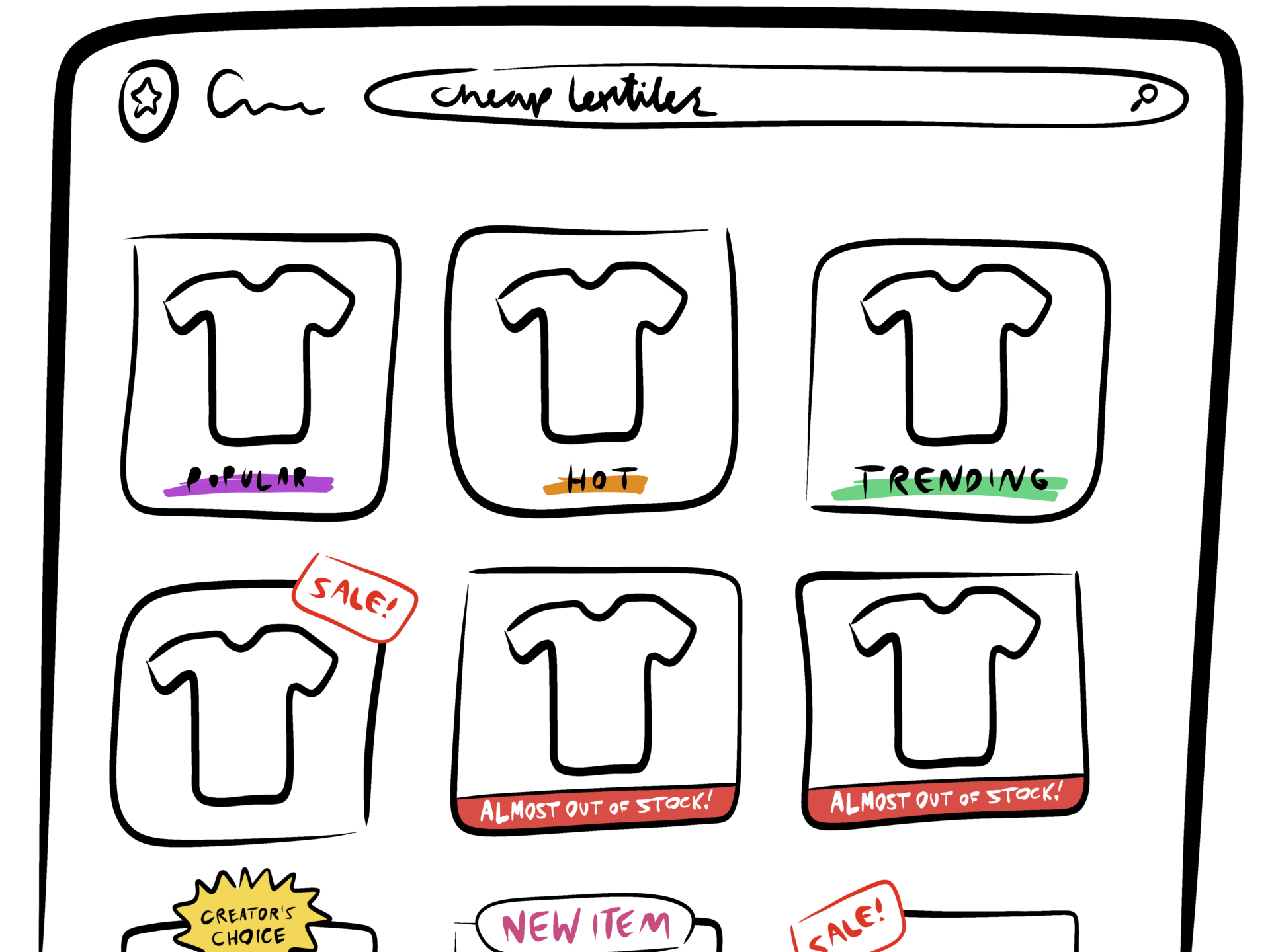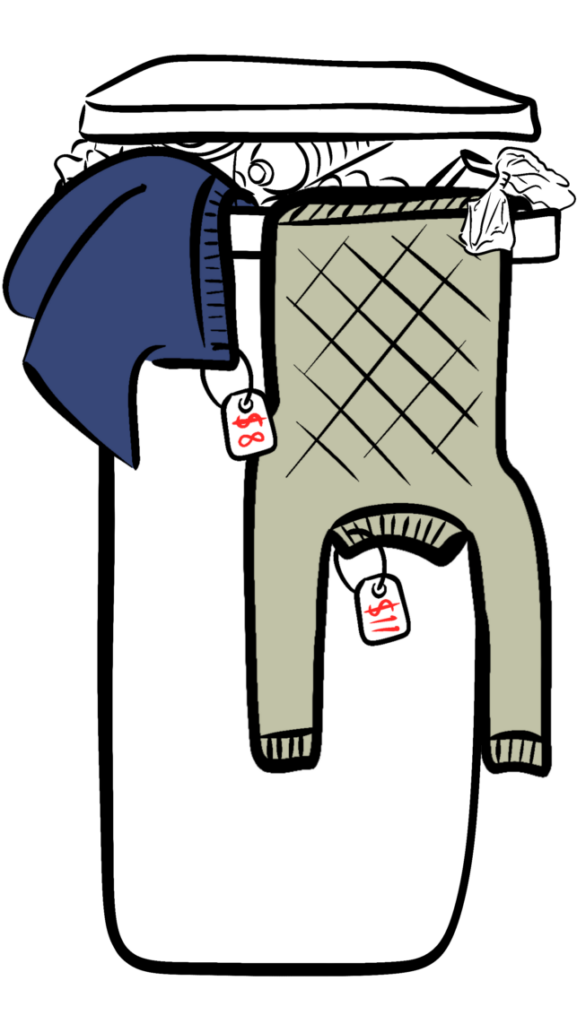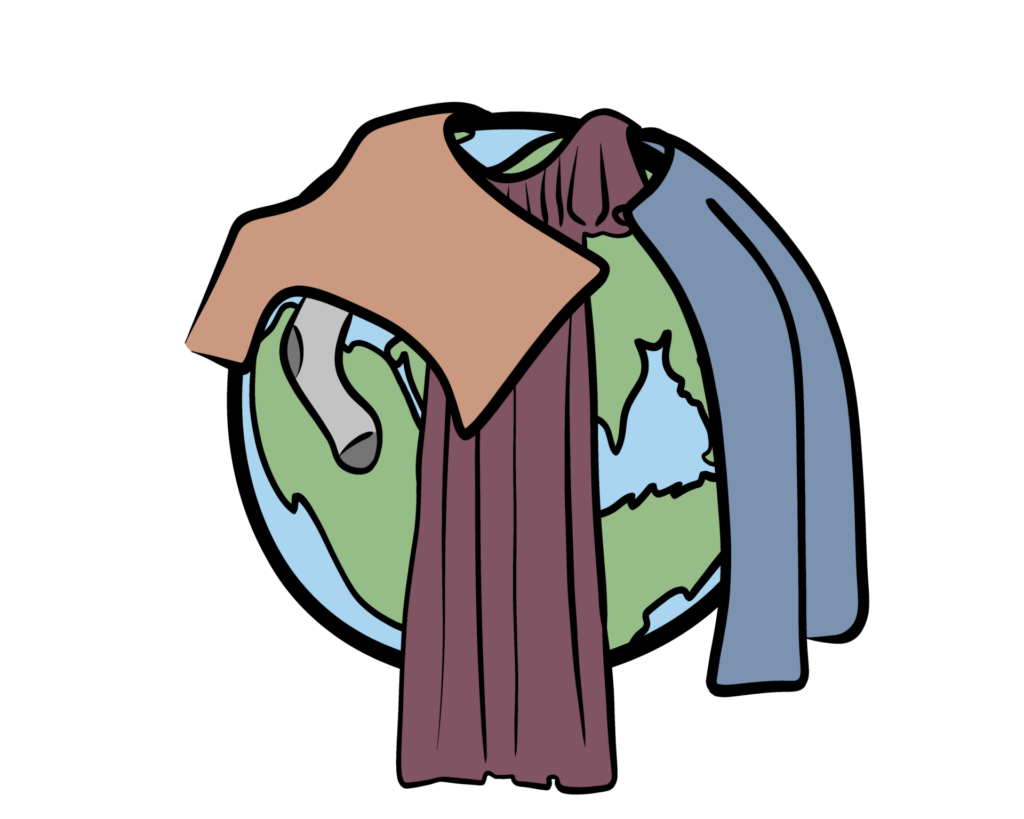the fast fashion project
informing you on the industry behind your everyday purchases, and guiding you to a sustainable and ethical approach to fashion
click on text for sources
what’s fast fashion?
how do you define fast fashion?
global pollution
Fashion is the second largest polluter in the world. 70% of garments are made with synthetic fibres, 92 million tonnes of clothing waste is produced annually, and the cotton industry uses more insecticides and pesticides than any other crop in the world. 70% of textiles are dyed with azo dyes, which can contain cancer-causing cadmium, chromium, mercury, and lead.
unethical labour
The fast fashion industry is awash with underpaid, underage, and mistreated workers, unsafe working conditions, and more. Garment workers today are paid as little as absolutely nothing. Investigations have revealed people working 18-hour days with 1 day off per month. In 2013, the Rana Plaza collapse killed over 1,130 and injured more than 2,500 people.
poor quality
Clothing made in the fast fashion industry is mass-produced at the lowest cost and highest speed possible, without care for quality. The result is cheap, synthetic, low-quality garments that don’t last long, and hurt the environment when they’re thrown out. But by the time you’ve thrown out your garment, it’ll be out of style anyways. Time to go shopping again.
massive scale
The global fashion industry squeezes 1.7–2.5 trillion dollars out of consumers on a yearly basis, and in return exhausts incredible amounts of resources in order to produce 100-125 billion garments, of which roughly 80 billion are purchased. Overproduction is a major problem in the fashion industry; 40% more clothing is produced than could ever be worn.
mindset
Fast fashion is also a mindset.
A mindset that keeps us thinking we need more, we’re not enough, and keeps us detached from the reality of sweatshops, landfills, and climate change.
A mindset micromanaged by corporations, sown into our way of living through undertones in branding, marketing, architecture, and media.
A mindset built on insecurity, greed, jealousy, collecting, anxiety, status, and short-lived dopamine hits, instead of expression, community, creativity, freedom, fun, inspiration, and artistry.
“Fast fashion is not free. Someone, somewhere is paying the price.”
Lucy Siegle
british journalist and writer
take action
the world (as well as us humans who live here) is at risk – anything helps
before you buy…
be a mindful consumer
Not everything here is accessible for everyone.
Remember to…
Start where you are. Use what you have. Do what you can.
Arthur Ashe
be mindful of waste
inform yourself
groups & organizations
on a political level…
#ConsciousFashion Pledge
by velichor

velichor.co/fastfashion/pledge
#ConsciousFashion
SIGN THE PLEDGE. MAKE A DIFFERENCE.
Play your part in the fight against fast fashion by signing the pledge. Make a custom pledge that is accessible for you. The goal is 1,000 pledges. Spread the word!
I am affiliated with but not sponsored by myself
↗
#NoMorePolyester Pledge

mailchi.mp/fashionrevolution/no-more-polyester
#NoMorePolyester
“In 2024 join the pledge to buy #NoMorePolyester! It’s a tough challenge – polyester is everywhere – but the era of plastic clothing needs to end. Together we can help reduce polyester consumption and production!”
I am not affiliated with or sponsored by Fashion Revolution
↗
#NoNewClothes Challenge
by velichor
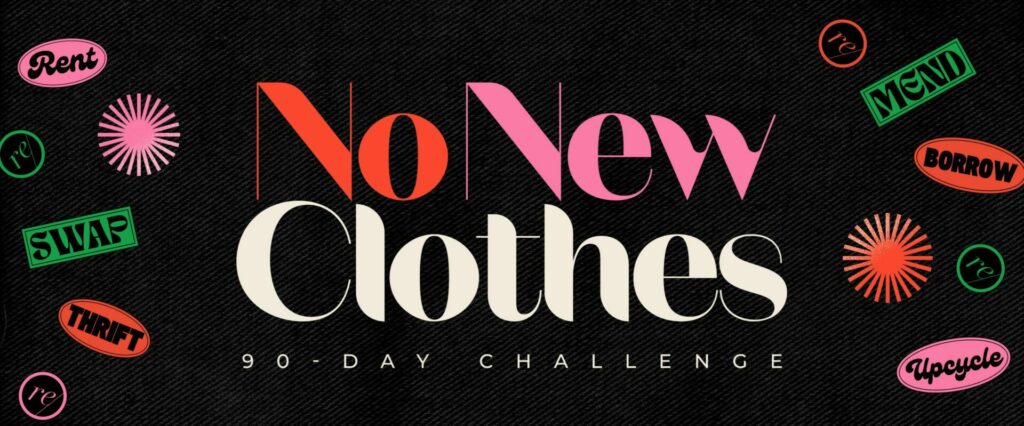
remake.world/no-new-clothes-2024
#NoNewClothes
“The purpose of this challenge is to stop and consider the values we want to wear, and the role we can play in addressing overconsumption to change the fashion industry going forward. By taking on the challenge to buy no new clothes — whether that’s buying nothing at all or only secondhand — for 90 days, you will reduce your carbon footprint, limit the waste you send to landfill, and keep your hard-earned money out of the pockets of companies that hurt people and the planet.”
I am not affiliated with or sponsored by Remake
↗
if i can do it, you can too.
“75% of consumers believe that sustainability is important and one-third are willing to choose brands that help environmental and social improvement.”
It’s time to take action.
For real this time.
stats
click ↗ for source
(that’s more than the Great Wall of China weighs)
“Fast fashion is like fast food. After the sugar rush, it just leaves a bad taste in your mouth.”
Livia Firth
italian activist
brands
support brands that don’t harm people, animals, and the planet
Legend
What do all the icons mean?
Great Sustainability Rating (GOY)
Good Sustainability Rating (GOY)
Average Sustainability Rating (GOY)
Poor Sustainability Rating (GOY)
Awful Sustainability Rating (GOY)
Environmental Practices • 1 = Worst • 5 = Best (GOY)
Labour Practices • 1 = Worst • 5 = Best (GOY)
Transparency • 0 = Worst • 100 = Best (FTI)
Animal Welfare Practices • 1 = Worst • 5 = Best (GOY)
Size Inclusive • ?XL = Largest Size
Brands
Ethical Brands
brands to look for
Yes Friends
Editor’s Choice
5/5
5/5
5/5
4XL
Outland Denim
5/5
5/5
5/5
3XL
Monsoon Blooms
5/5
5/5
5/5
The Standard Stitch
5/5
4/5
5/5
5XL
Subset
5/5
4/5
N/A
3XL
STANLEY/STELLA
5/5
4/5
5/5
Infantium Victoria
5/5
4/5
5/5
ReCreate
5/5
5/5
4/5
MUD Jeans
5/5
4/5
5/5
Quazi Design
5/5
5/5
N/A
non
5/5
4/5
5/5
DAWN Denim
4/5
5/5
5/5
Mila.Vert
5/5
4/5
4/5
LA Relaxed
5/5
4/5
5/5
The R Collective
5/5
5/5
4/5
ARMEDANGELS
5/5
4/5
4/5
The Classic T-Shirt Company
4/5
4/5
4/5
3XL
tentree
4/5
3/5
4/5
BEEN London
5/5
4/5
4/5
Swedish Stockings
5/5
4/5
4/5
Kuyichi
5/5
4/5
2/5
Puma
4/5
3/5
66%
3/5
Patagonia
4/5
2/5
40%
4/5
powered by Good On You and the Fashion Transparency Index
Unethical Brands
brands to avoid
TOM FORD
1/5
1/5
0%
1/5
TEMU
1/5
1/5
0/5
SHEIN
1/5
1/5
7%
2/5
Fashion Nova
1/5
1/5
0%
2/5
CIDER
1/5
1/5
3/5
Forever 21
1/5
1/5
2/5
New Yorker
1/5
1/5
0%
0/5
Romwe
1/5
1/5
3%
2/5
REVOLVE
1/5
1/5
2%
2/5
Hot Topic
1/5
1/5
0/5
Skechers
1/5
1/5
18%
2/5
Reebok
2/5
2/5
23%
2/5
Zara
2/5
2/5
50%
2/5
Amazon
2/5
2/5
26%
2/5
Walmart
2/5
2/5
23%
2/5
Urban Outfitters
2/5
2/5
36%
2/5
Victoria’s Secret
2/5
2/5
19%
N/A
Abercrombie & Fitch
2/5
2/5
33%
2/5
H&M
2/5
2/5
71%
2/5
Old Navy
2/5
2/5
48%
2/5
American Eagle
2/5
2/5
21%
2/5
Blundstone
2/5
2/5
2/5
powered by Good On You and the Fashion Transparency Index
These lists are not exhaustive! It is highly recommended to look up brands you don’t find here in Good On You‘s extensive database.
don’t see the brand you’re looking for?
Good On You

“Ethical brand ratings. There’s an app for that.”
Good On You is a web and mobile app that rates fashion brands based on sustainability in three areas: Planet, People, and Animals, allowing you to check to see if a brand is sustainable before supporting them.
I am not affiliated with or sponsored by Good On You
↗
♡ powered by GoodOnYou and Fashion Transparency Index
? how their ratings work
✓ no affiliate links were used
“Fast fashion is like fast food. After the sugar rush, it just leaves a bad taste in your mouth.”
Livia Firth
italian activist
there’s more from
the muckraker
writing, video, the #ConsciousFashion pledge, and more
“Demand quality, not just in the products you buy, but in the life of the person who made it.”
Orsola de Castro
co-founder of fashion revolution
the life of a garment
learn about the journey of a single piece of clothing – from farm to landfill
artistic lifecycle
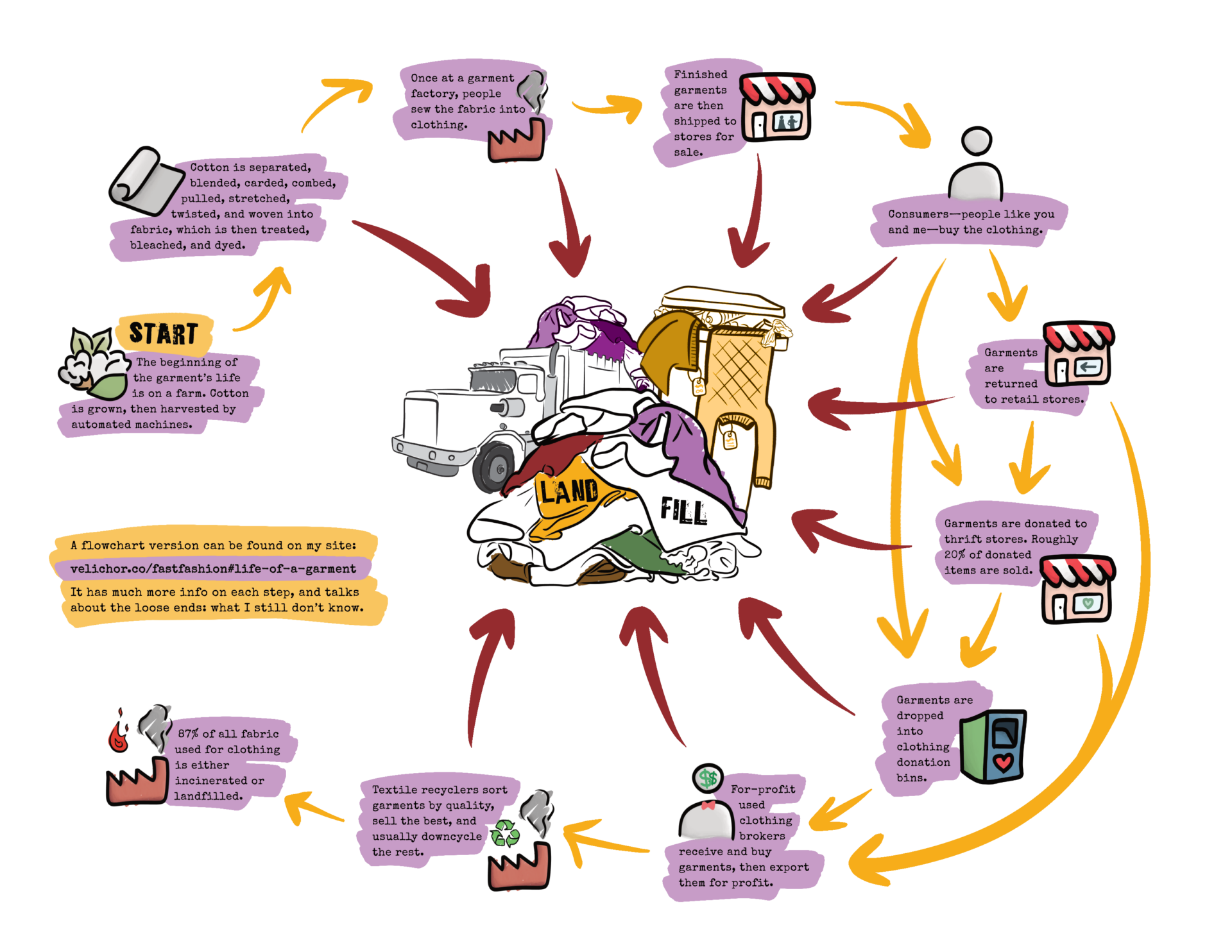
interactive flowchart
This is the most detailed version of the Life of a Garment project, attempting to portray all possible stages of a garment’s life – specifically a cotton t-shirt, but most of it applies to most garments.
Note: Miro can be slow to load, it’s not just you.
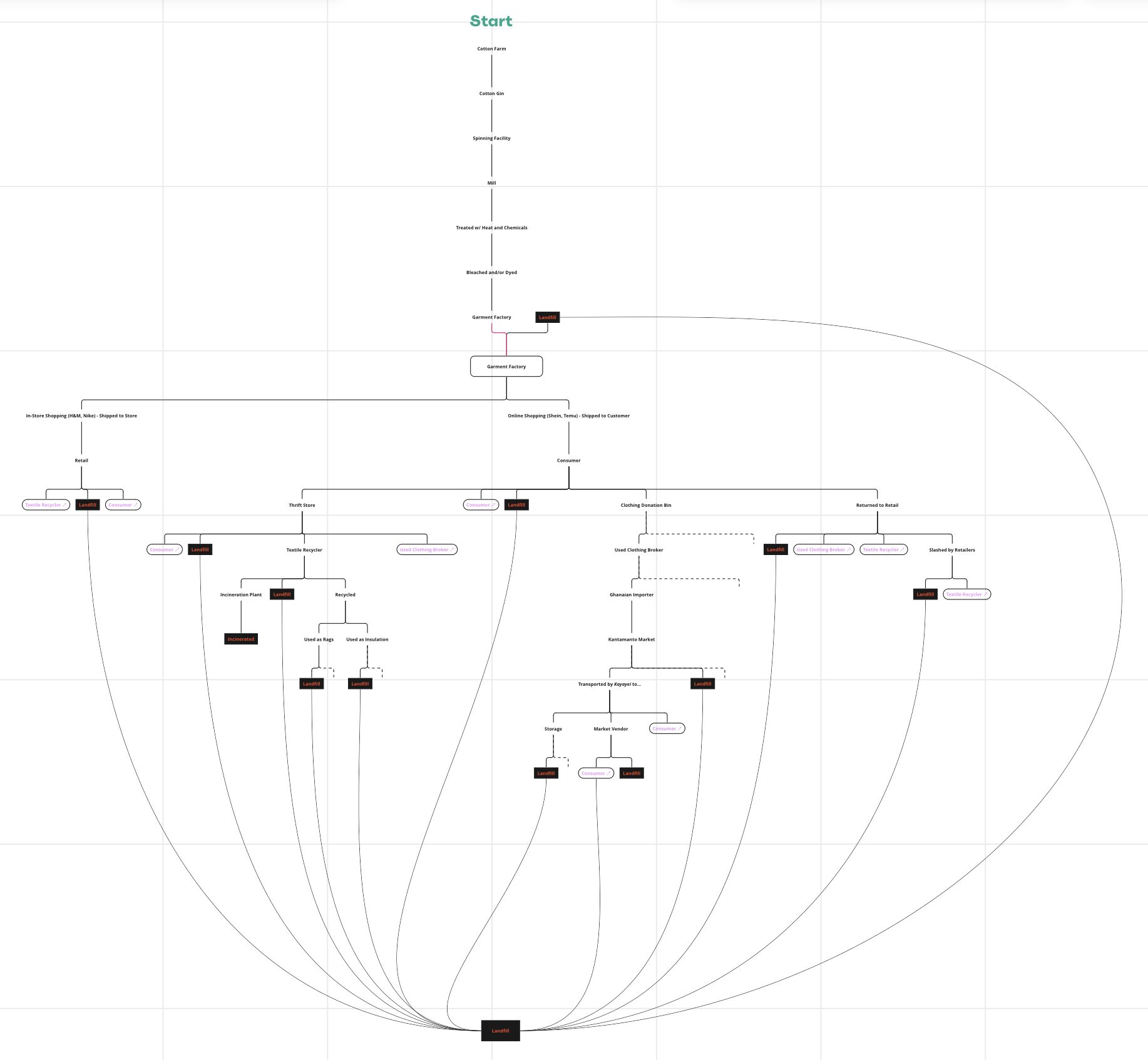
step-by-step details
Find a detailed description of each step along the way. Note that no garment visits all steps; each one has a unique journey from farm to landfill. Also note that this is a linear list, simply meant to display more information about each step of the way.
Step-by-Step Details
missing information
In the flowchart version, there are some nodes that look like this:

Question mark nodes refer to missing information. Unfortunately, the fashion industry isn’t very transparent, which results in many of these nodes scattered throughout the flowchart.
If you have knowledge in the area of a missing node, please provide feedback below.
feedback
Quick Note: I’m just one person, and I’m doing the best I can. The Life of a Garment project is not and cannot be perfect.
There are many, many variables. This project attempts to capture the journey of the average garment, and includes many but not all different paths it may take.
That being said, I am always open to feedback, suggestions, constructive criticism, collaboration requests, etc!
Please send feedback if you find inaccuracies, missing information, or simply have an idea for the page!
“Abundance and excess are not the same thing.”
dead white man’s clothes
what are “dead white man’s clothes”?
-
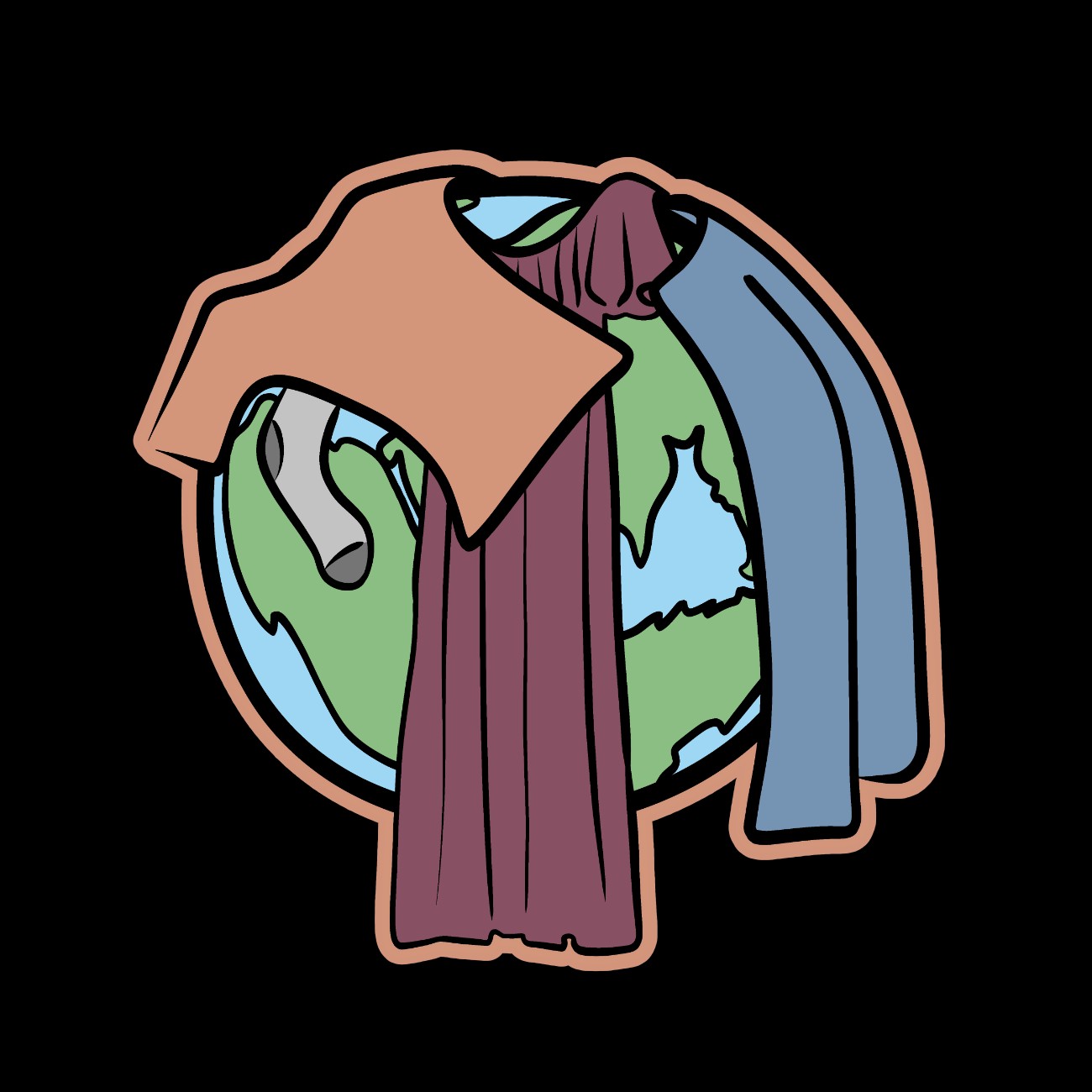
Dead White Man’s Clothes, the result of our superfluous clothing consumption
Photo: velichor Where does clothing go when you’re done with it? A lot of it ends up in Kantamanto Market, one of the largest secondhand clothing markets in the world where over 30,000 vendors attempt to sell the ~15,000,000 garments that pass through it every week. The Journey A stained t-shirt is tossed onto an
learn more
deadwhitemansclothes.org

Dead White Mans Clothes
“Dead White Man’s Clothes is a multimedia research project exploring the secondhand clothing trade in the context of Accra, Ghana. This project is coordinated by The OR Foundation, a USA-based non-profit co-founded by us – Liz Ricketts and Branson Skinner.”
I am not affiliated with or sponsored by Dead White Man’s Clothes or The OR Foundation
↗
theor.org
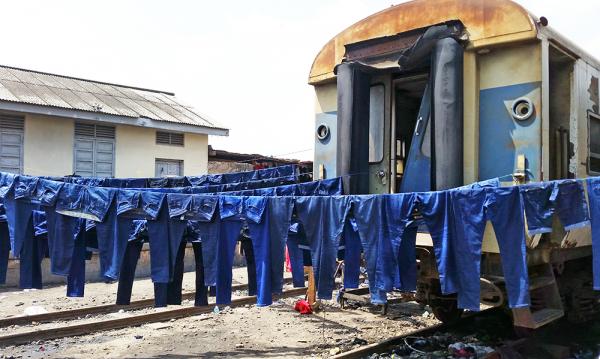
The OR Foundation
“The Or Foundation (pronounced “or”) stands for choice. Choice is agency – agency to escape the predominant violent socio-economic system of corporate colonialism and to change it from within. We are a 501(C)(3) public charity in the USA and a registered charity in Ghana that has been operating in both countries since 2011.”
“Too much clothing. Not enough Justice.
Too often a consumer. So rarely a human.
It is time to recover. You are invited.”
I am not affiliated with or sponsored by Dead White Man’s Clothes or The OR Foundation
↗
abc.net.au
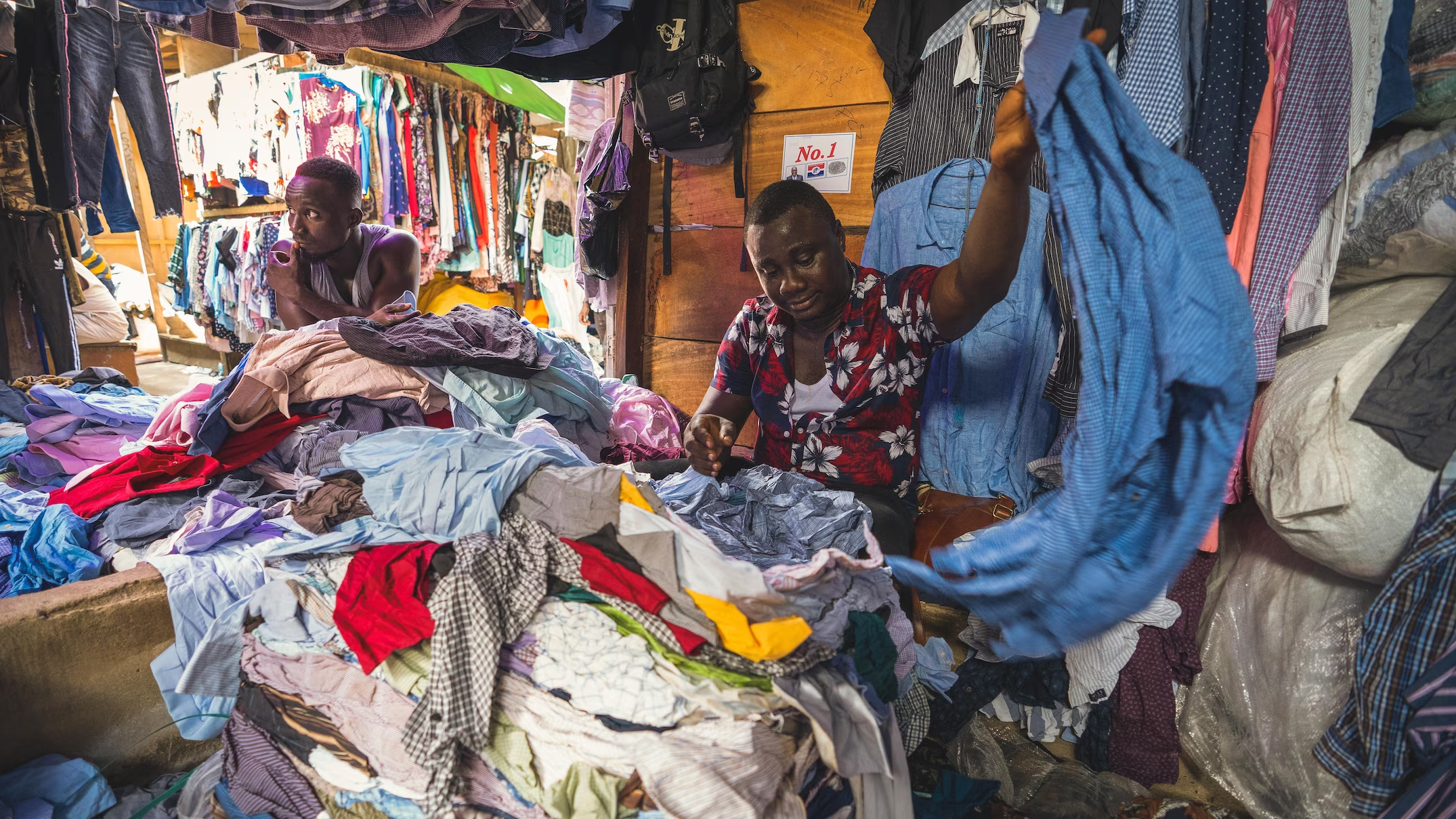
Dead white man’s clothes: How fast fashion is turning parts of Ghana into toxic landfill
“It’s the dirty secret behind the world’s fashion addiction. Many of the clothes we donate to charity end up dumped in landfill, creating an environmental catastrophe on the other side of the world.”
“The clothes arrive long before dawn, when the city has yet to stir. Headlights ablaze, semitrailers squeeze into ever-narrower alleys, disgorging hundreds of bales wrapped in bright orange plastic. Men and women, some bearing clipboards, inspect the goods and…”
I am not affiliated with or sponsored by ABC, Foreign Correspondent, or Linton Besser
↗
“The greatest threat to our planet is the belief that someone else will save it”
Robert Swan
history
the history of fast fashion, starting in the 1700s
1700s
1700s
1800s
1800s
1900s
1900s
2000s
2000s
2010s
2010s
2020 – Present
2020s – Present Day
“Decades ago, people saved for months to buy one garment. Now, we spend upwards of $100/month on cheap clothing in a desperate attempt to keep up with trends.”
resources
films, organizations, articles, groups, brands, petitions – everything
✰ recommended
sustainable brands
sustainability certifications
sustainable sourcing
Global Organic Textile Standard (GOTS)
Forest Stewardship Council® (FSC)
US Department of Agriculture (USDA)
sustainable manufacturing
Cradle To Cradle Certified® (C2C)
Leadership in Energy and Environmental Design (LEED)
non-toxic & sustainable product
video
introduction to fast fashion
✰ The lies that sell fast fashion
The life cycle of a t-shirt – Angel Chang
The Ugly Truth Of Fast Fashion
short films
✰ fast fashion and culture: a short film
“Fast Fashion” a short film by Marissa Gibbs
docufilms
informative videos
✰ The lies that sell fast fashion
How We REALLY Stop Fast Fashion
Fast Fashion Explained In Under 5 Minutes
The life cycle of a t-shirt – Angel Chang
The Ugly Truth Of Fast Fashion
Why everything you buy is worse now
World consumption of major textile fibres over time
music videos
podcasts
shows
Dirty Laundry with Tara Stewart
episodes
✰ Fast Fashion (New Economics Podcast)
‘Super cute please like’: the unstoppable rise of Shein (The Audio Long Read)
petitions & actions
petitions
Levi’s, IKEA, Amazon: protect workers!
lululemon: Drop the greenwashing!
Rethink the Clothes on Your Back, Pledge to Stop Fast Fashion
Tell Fast Fashion Companies to Stop Harming Their Customers, Textile Workers, and the Earth
Tell #FilthyFashion to ditch coal
Zara, H&M: Stop sourcing cruel cotton
Hermès and Prada: stop using exotic animal skins
other
Send Lululemon a message: Phase out fossil fuels in your manufacturing by 2030
affiliation
I am not affiliated with or sponsored by any brands, organizations, etc, that are mentioned in this page, unless otherwise stated.
feedback
This page is still under development, and anything marked as [WIP] may be inaccurate or incomplete.
Please send feedback if you find inaccurate or incomplete sections, missing information, or simply have an idea for the page.
Any and all feedback is welcome.

